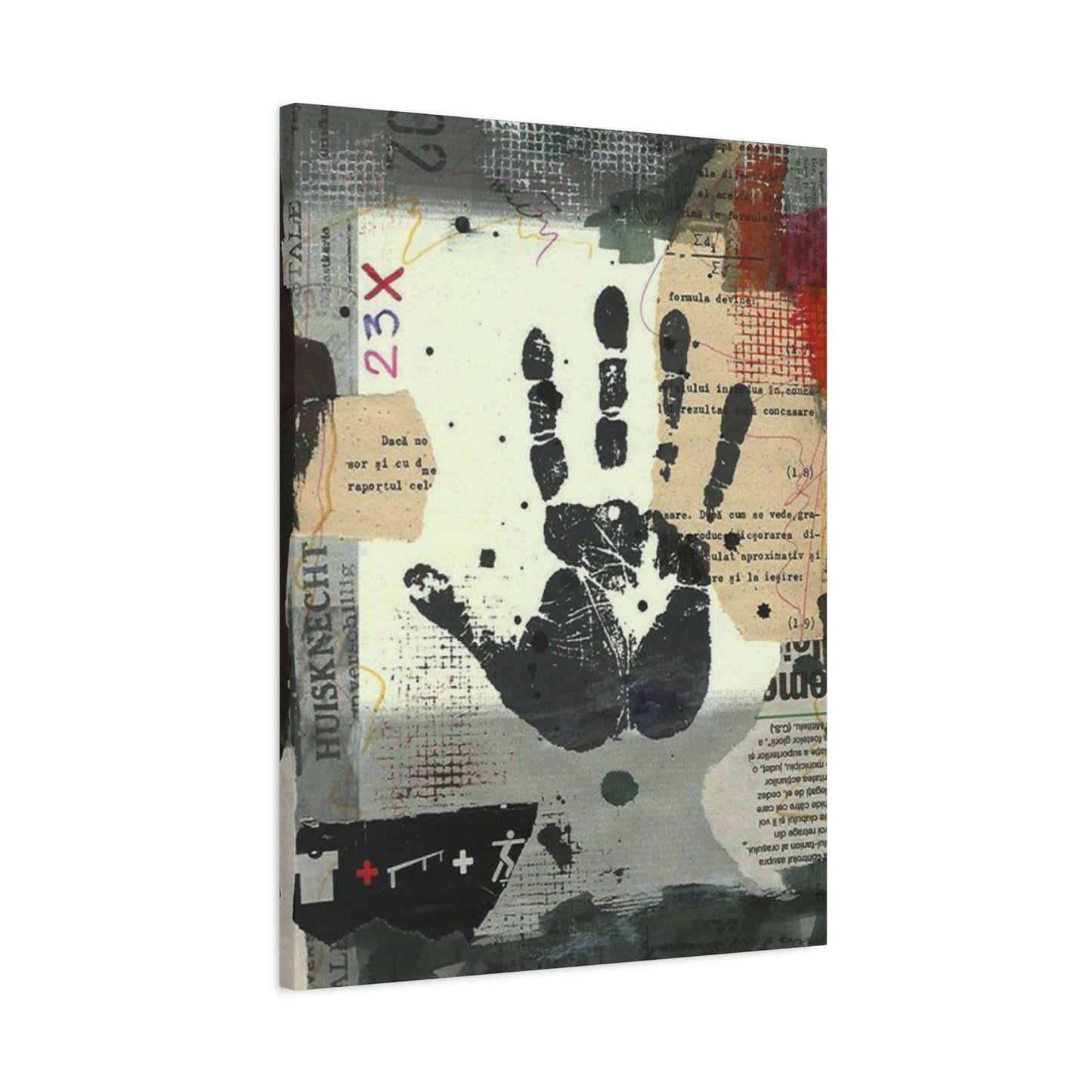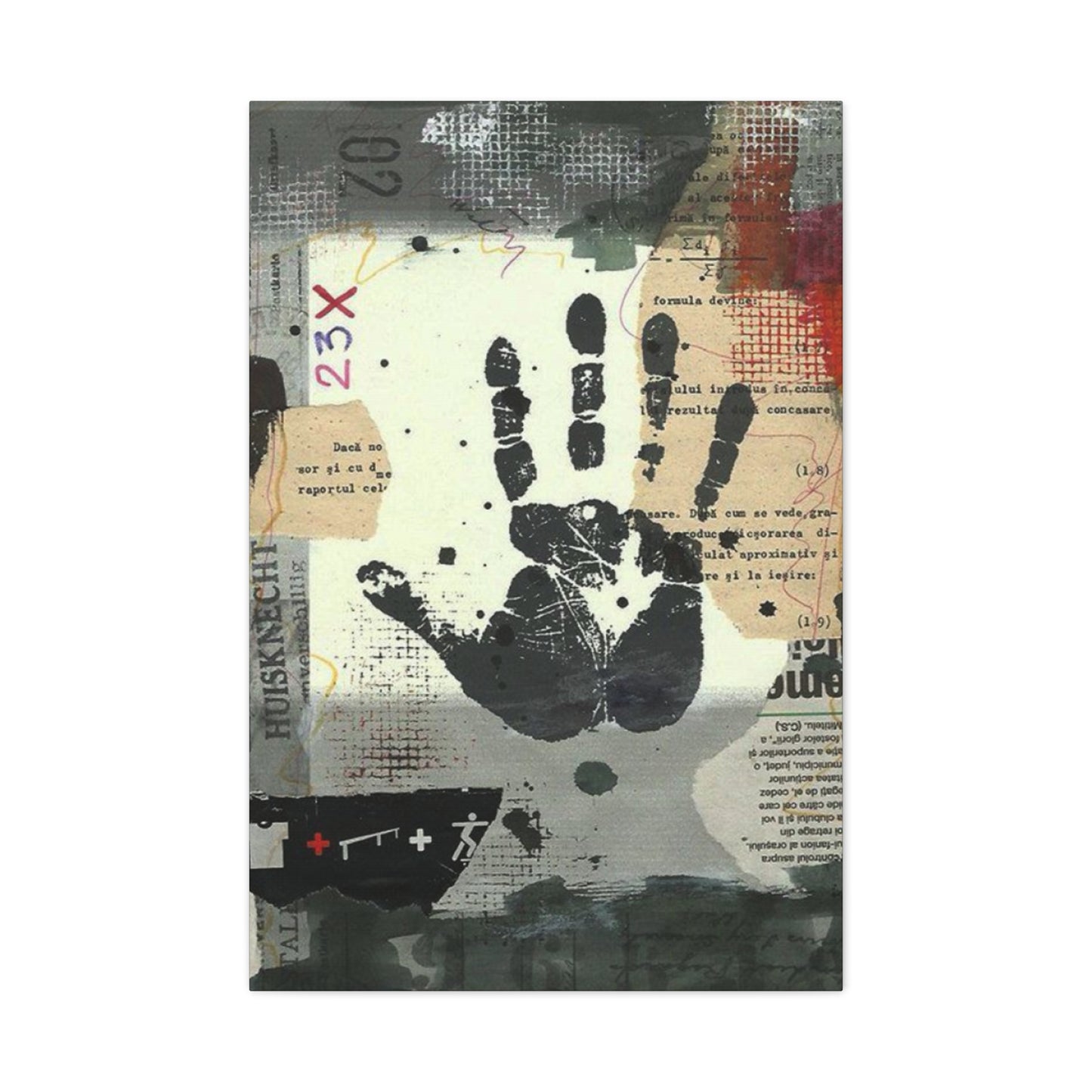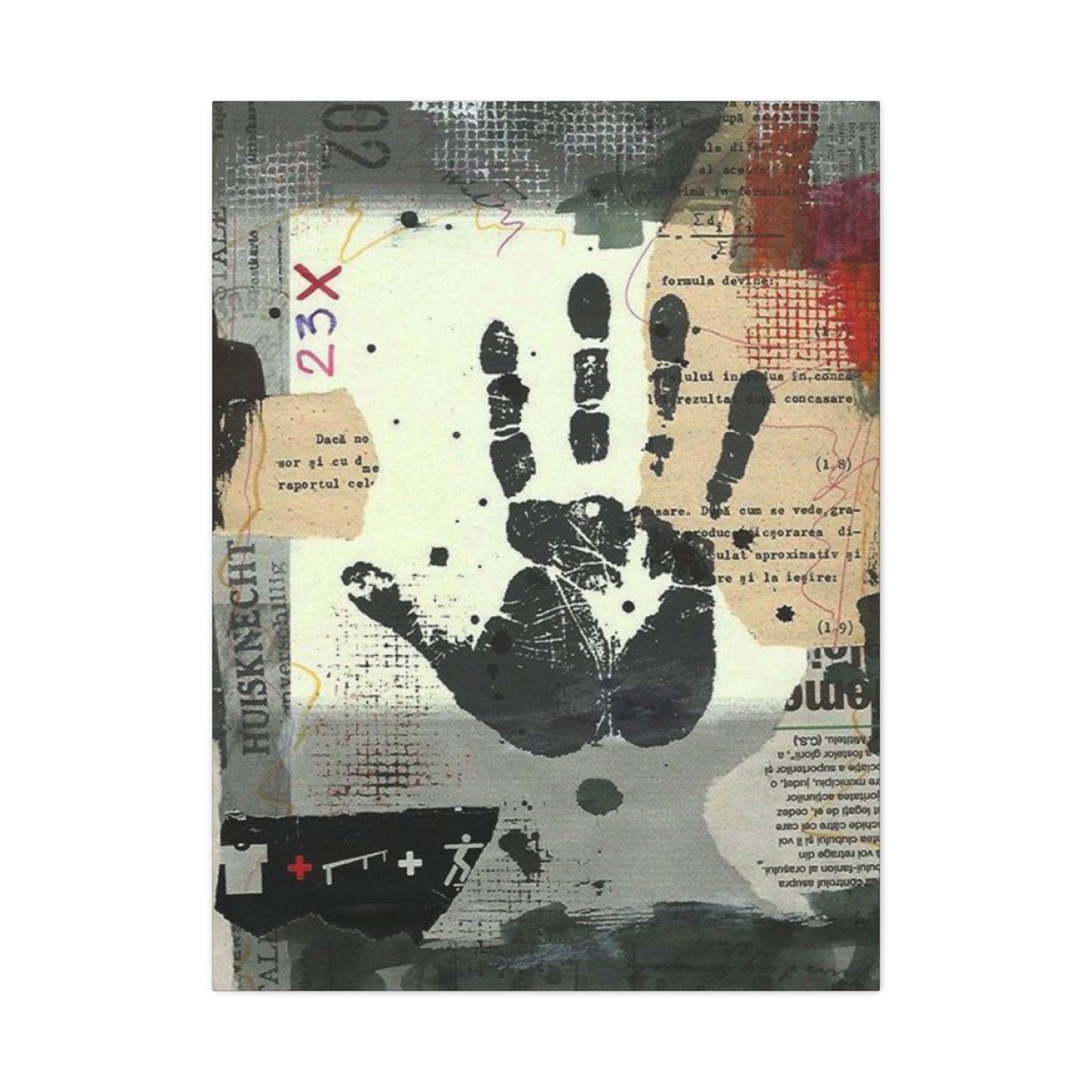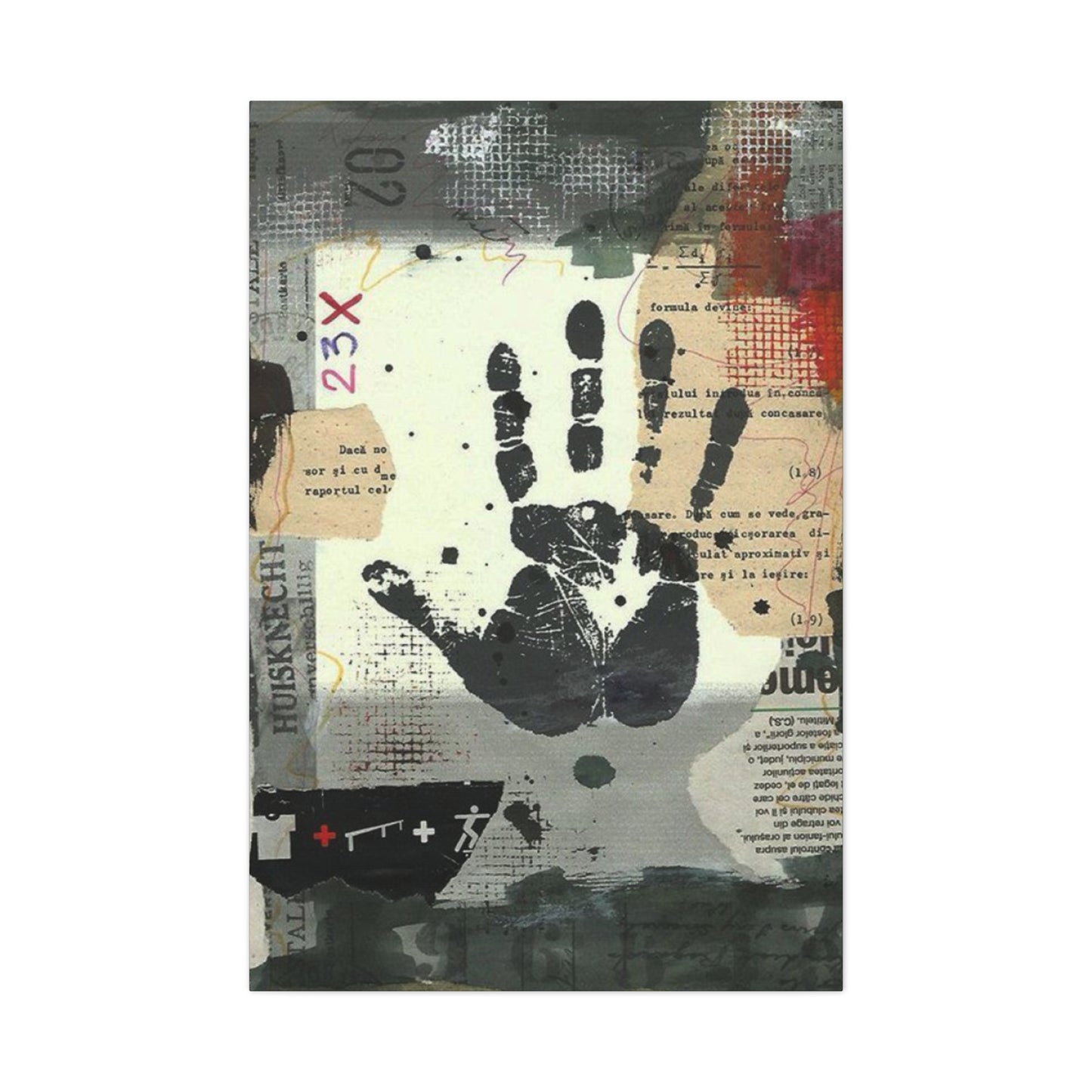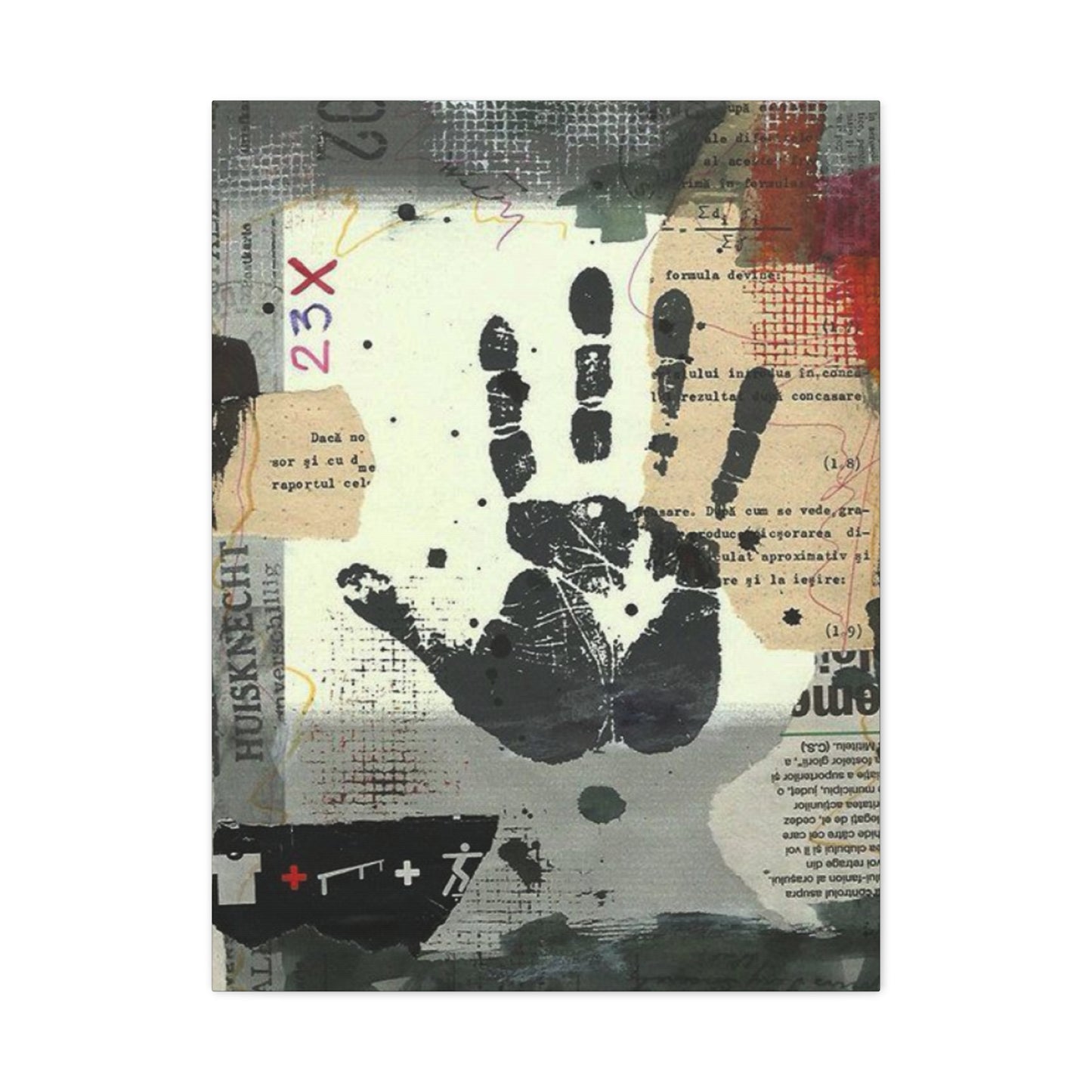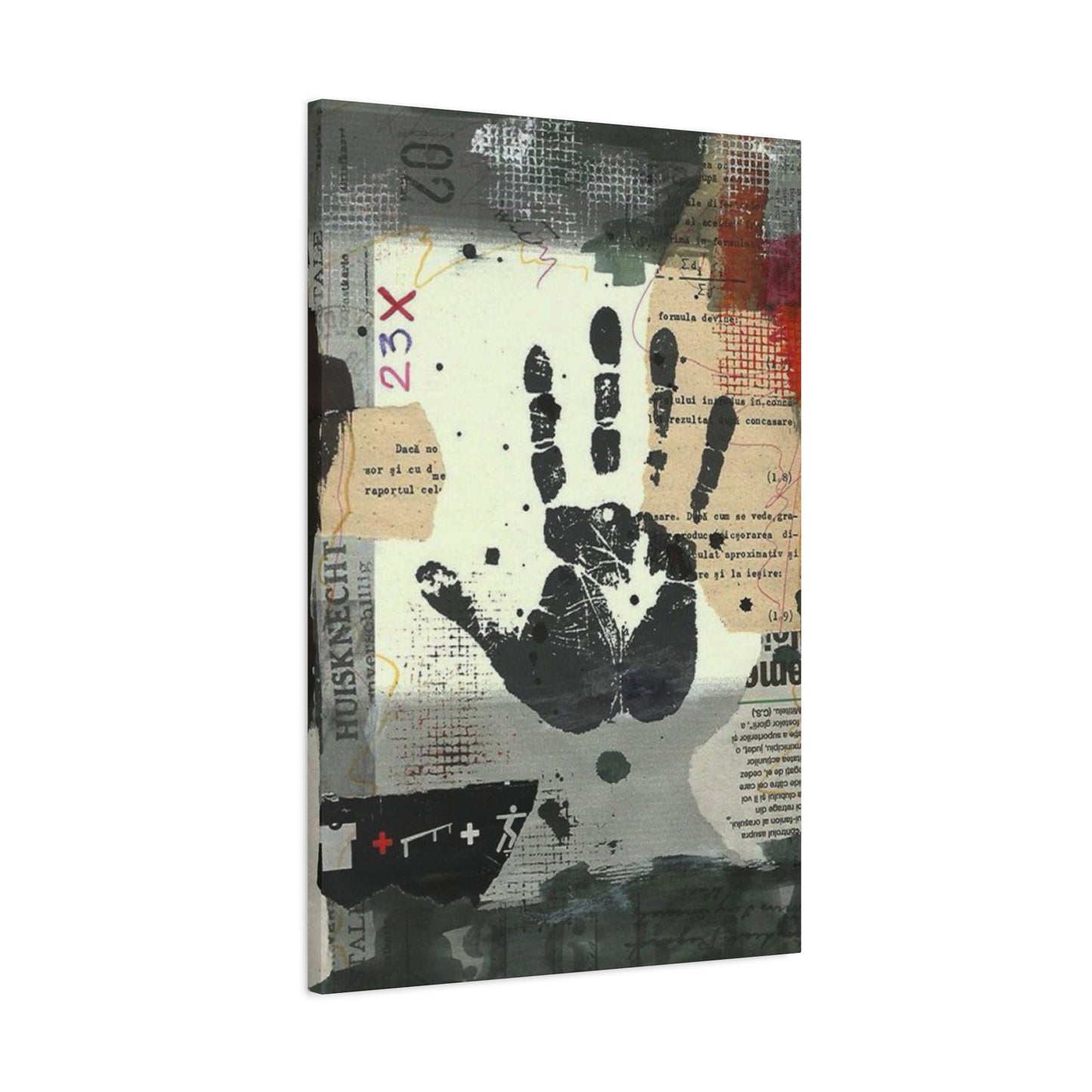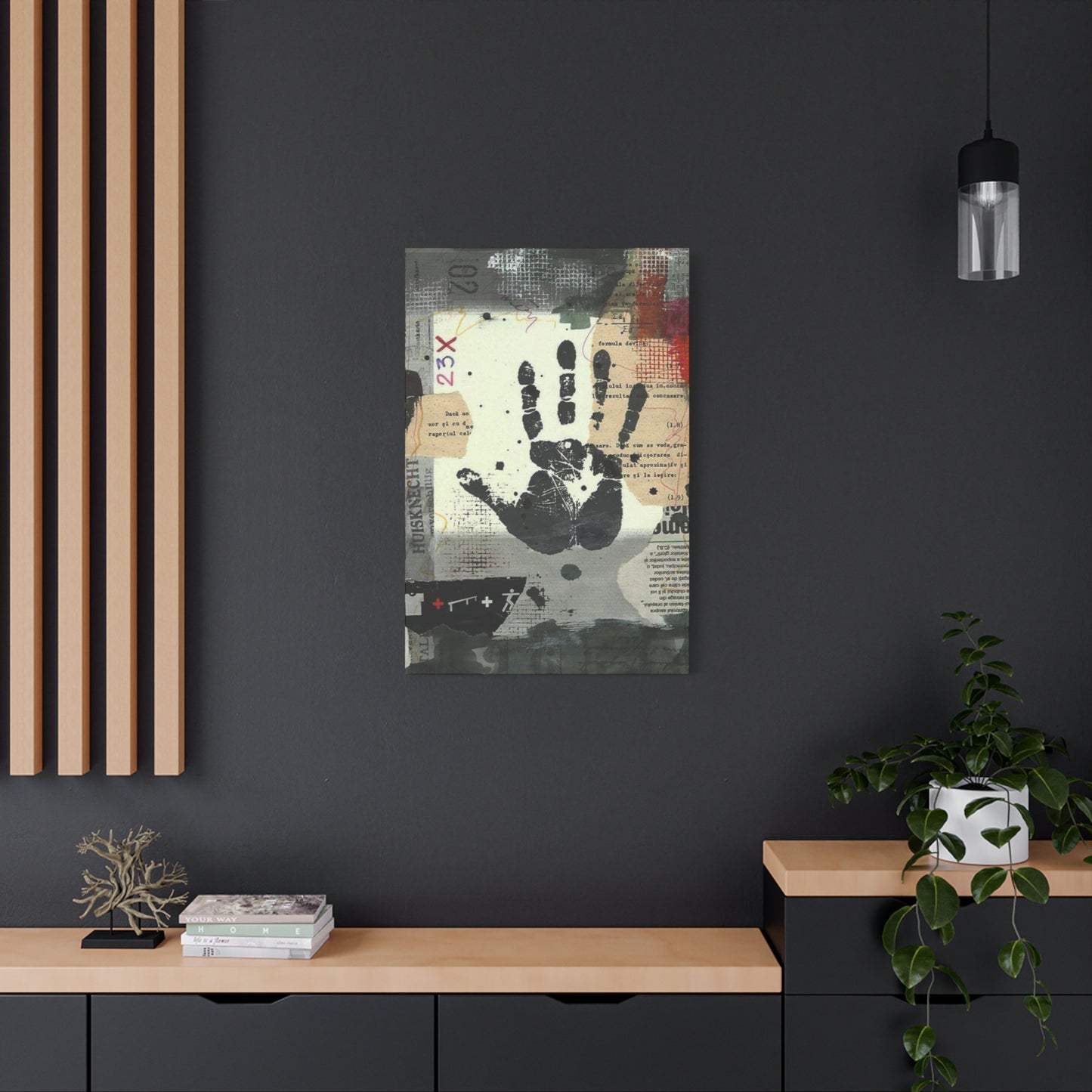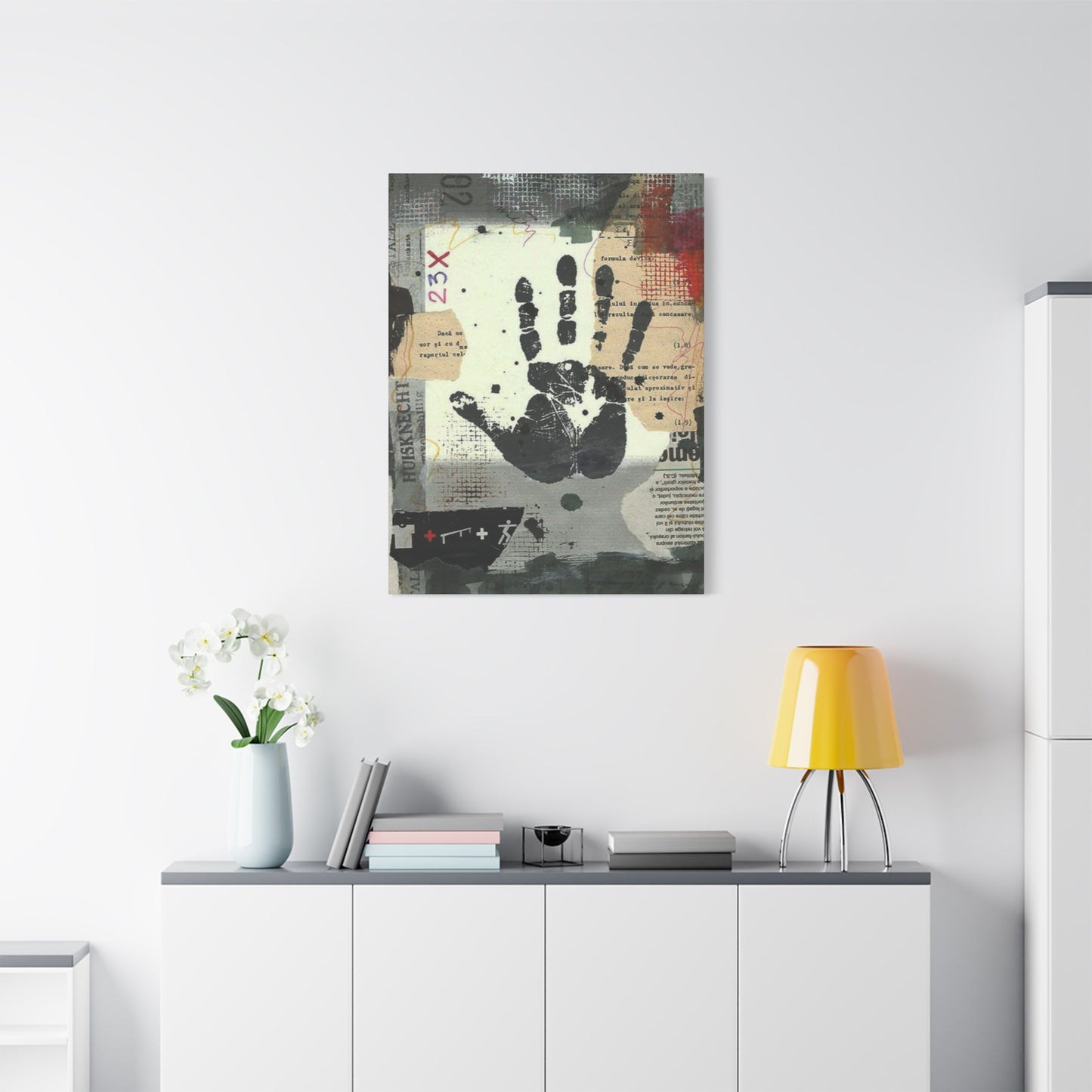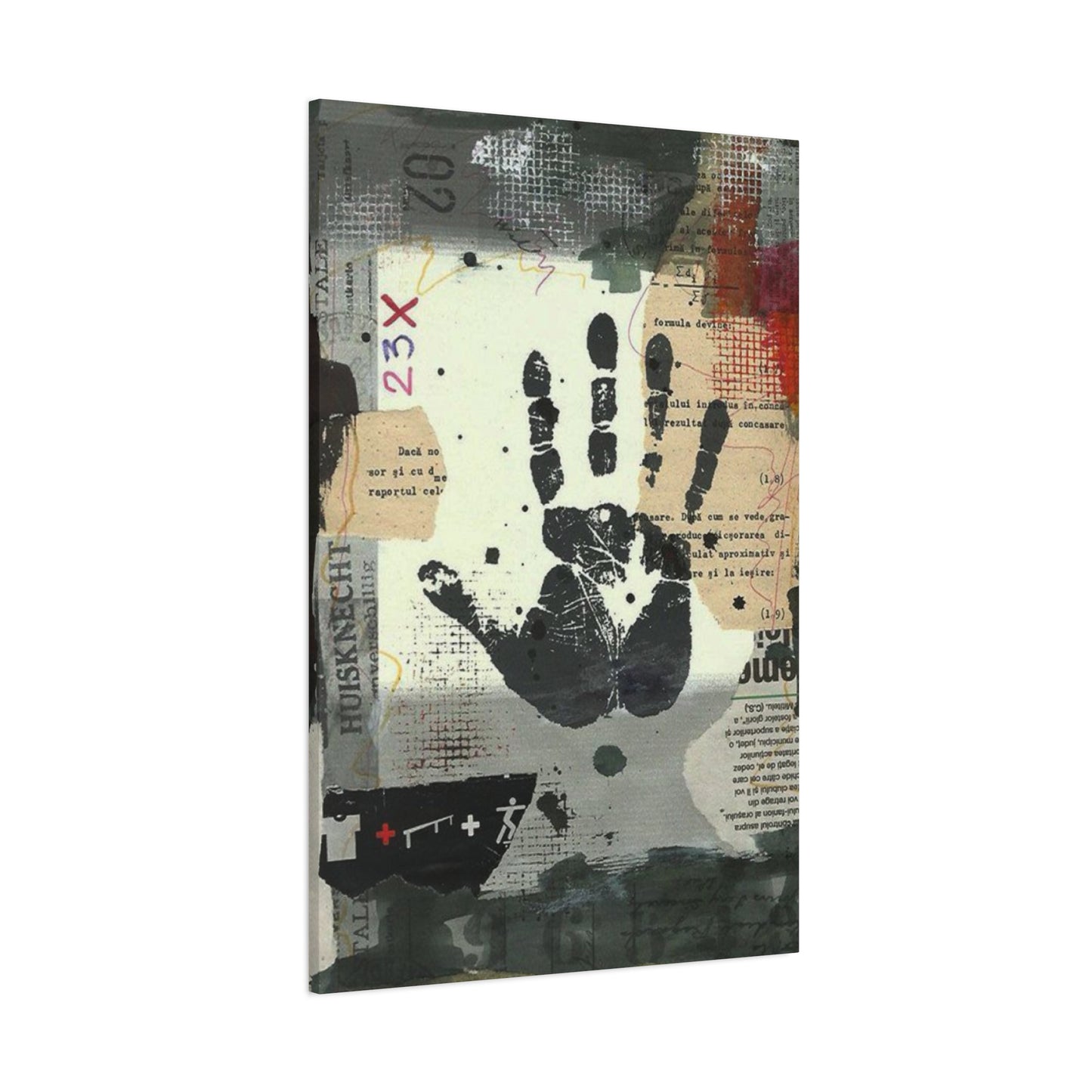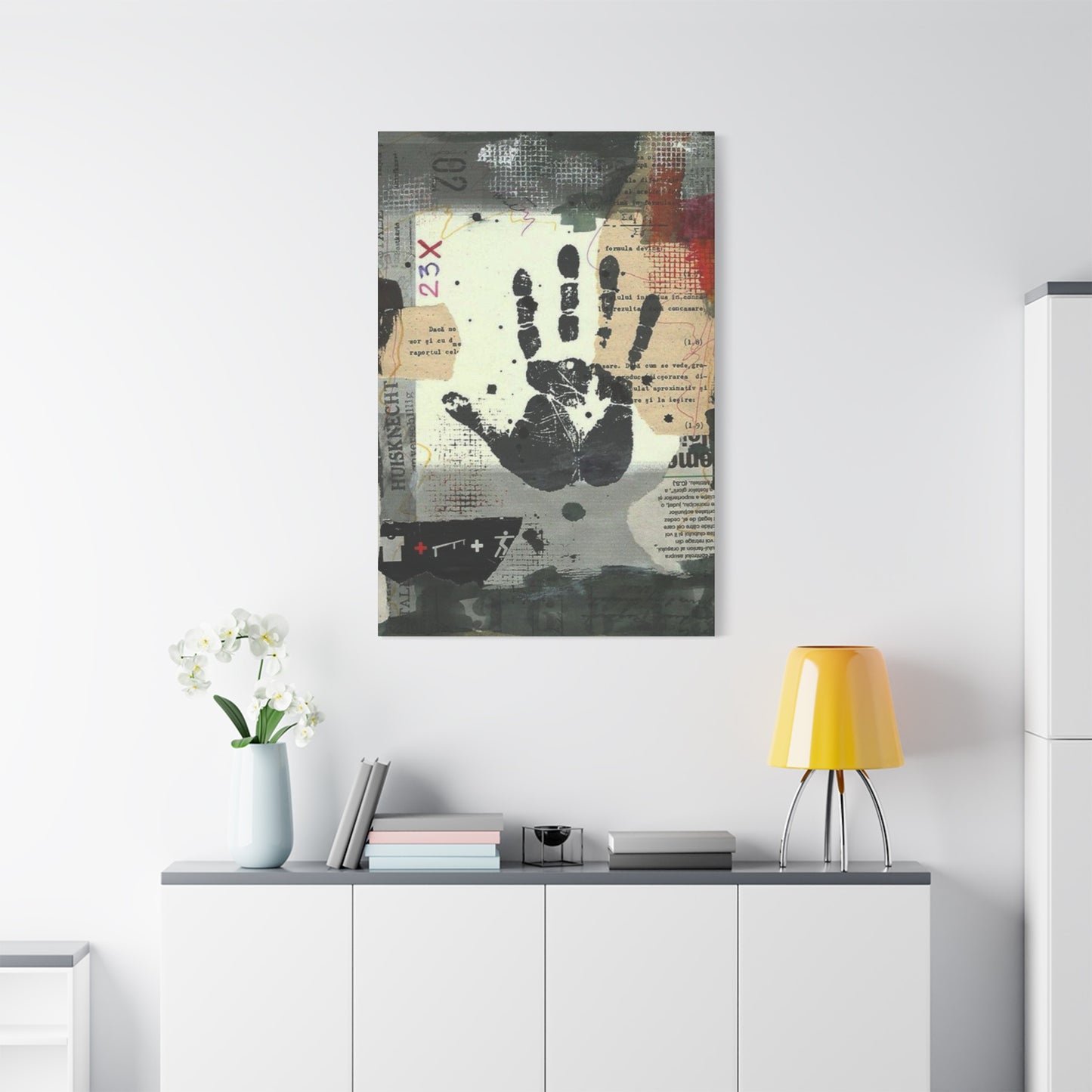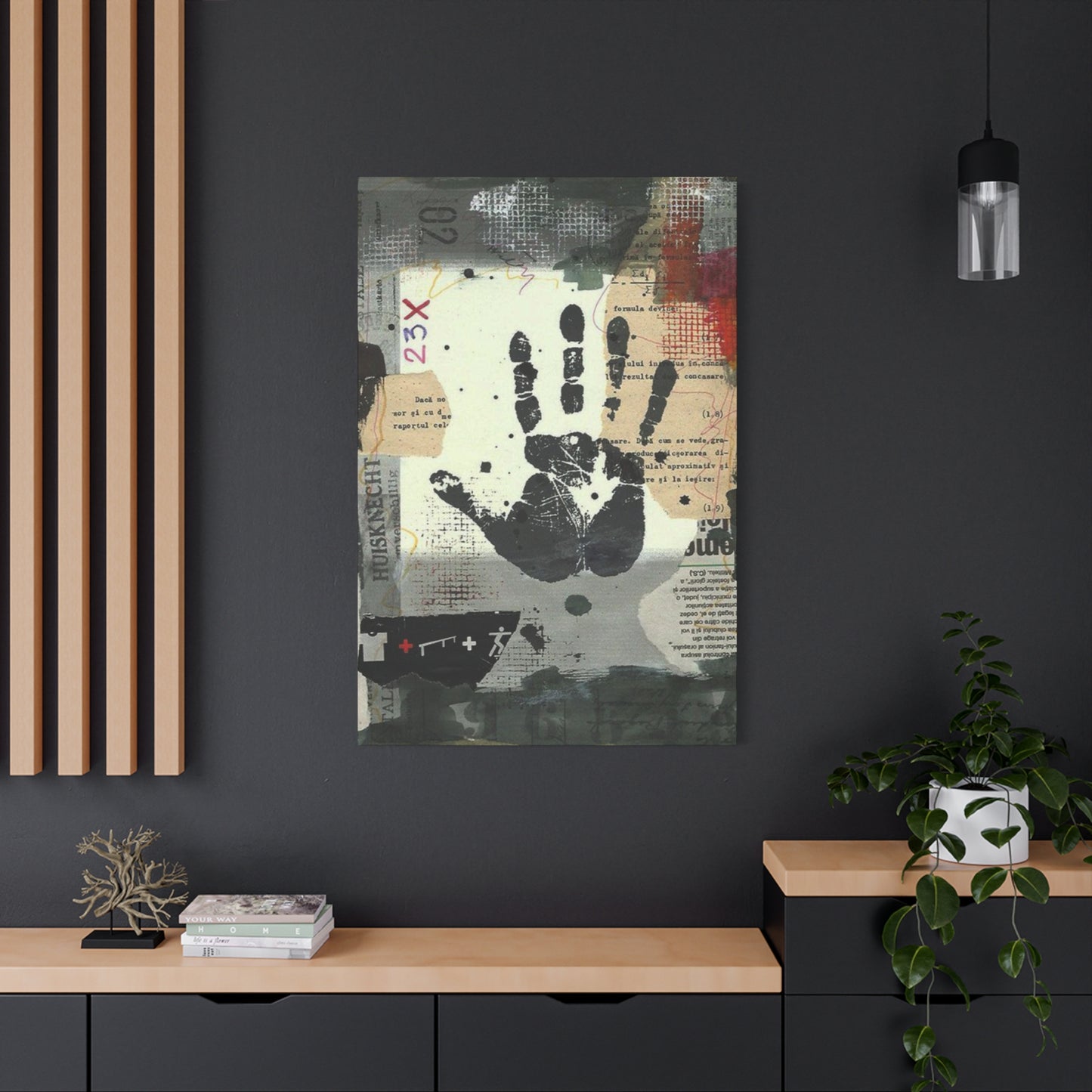Modern Mixed Media Wall Art Featuring Abstract Handprint Designs
The fusion of personal expression and artistic creativity reaches new heights when handprint impressions meet abstract canvas compositions. This unique art form transforms simple palm impressions into sophisticated visual narratives that speak to both the heart and the aesthetic sensibilities of modern viewers. The beauty of handprint abstract canvas creations lies in their ability to capture fleeting moments while simultaneously serving as striking decorative elements that enhance any environment.
Contemporary artists and crafters have discovered that handprint impressions offer an exceptional foundation for mixed media experimentation. These personal marks become the starting point for elaborate artistic journeys that incorporate various textures, colors, and materials. The result is artwork that maintains deep emotional significance while achieving professional-level visual impact.
The versatility of handprint-based abstract art makes it suitable for diverse settings, from intimate family homes to dynamic office environments. Each piece tells a unique story while contributing to the overall aesthetic atmosphere of its chosen location. The personal nature of handprint impressions ensures that no two artworks are identical, creating truly one-of-a-kind pieces that cannot be replicated through mass production methods.
Combining Handprints and Abstract Designs on Canvas
The marriage of handprint impressions with abstract design elements creates compelling visual compositions that balance personal significance with artistic sophistication. This combination approach allows artists to use the handprint as either a central focal point or as a subtle textural element within larger abstract compositions. The key to successful integration lies in understanding how the organic curves of hand impressions can complement or contrast with geometric abstract elements.
When developing these hybrid compositions, artists often begin by establishing the handprint impression as the primary compositional anchor. This approach ensures that the personal element remains visible and meaningful while allowing abstract elements to enhance rather than overwhelm the original impression. The handprint can be rendered in bold, contrasting colors to make it the dominant visual element, or it can be subtly integrated using tonal variations that create depth without sacrificing visibility.
Abstract elements work most effectively when they respond to the natural curves and lines present in the handprint impression. Flowing lines that echo the contours of fingers and palm create harmonious compositions, while angular geometric shapes can provide dynamic contrast that energizes the overall piece. The scale relationship between handprint and abstract elements requires careful consideration to maintain visual balance and ensure that neither component overwhelms the other.
Color relationships play a crucial role in successfully combining these disparate elements. Artists often choose color palettes that allow the handprint to maintain its identity while enabling abstract elements to contribute to the overall emotional tone of the piece. Complementary color schemes can create vibrant tension, while analogous palettes produce more serene, cohesive effects. The transparency and opacity of various elements also influence how successfully they integrate within the composition.
Layering techniques prove particularly effective in these combination approaches. Artists can apply abstract elements both beneath and above the handprint impression, creating complex visual relationships that reward careful viewing. Transparent glazes allow underlying elements to show through, while opaque applications can mask or modify existing elements. This layering approach enables artists to build complex narratives that unfold as viewers spend more time with the piece.
The texture becomes another important consideration when combining handprints with abstract designs. The natural texture of a handprint impression can be enhanced or contrasted through the addition of various mixed media elements. Smooth, flat abstract shapes can emphasize the textural quality of the handprint, while heavily textured abstract elements can create rich, tactile surfaces that invite closer examination.
Mixed Media Techniques for Handprint Wall Art
Mixed media approaches open unlimited possibilities for transforming simple handprint impressions into sophisticated artistic statements. These techniques allow artists to incorporate diverse materials and methods, creating pieces that engage multiple senses and offer rich visual experiences. The foundation of successful mixed media handprint art lies in understanding how different materials interact with each other and with the canvas surface.
Acrylic paints serve as the primary medium for most handprint applications due to their versatility, quick drying time, and excellent adherence to canvas surfaces. However, the mixed media approach encourages experimentation with additional paint types, including watercolors, oil paints, and specialty formulations designed for specific effects. Each paint type contributes unique characteristics to the final composition, from the flowing transparency of watercolors to the rich depth of oil paints.
Collage elements frequently enhance handprint compositions by adding textural interest and narrative depth. Paper materials ranging from tissue paper to heavier cardstock can be incorporated through various application methods. Torn edges create organic, flowing transitions between elements, while cut edges provide clean, geometric contrasts. The choice between these approaches depends on the overall aesthetic goals of the piece and the relationship desired between collage elements and the handprint impression.
Fabric incorporation represents another exciting avenue for mixed media exploration. Various textile materials, from delicate lace to heavy burlap, can be adhered to canvas surfaces to create rich textural contrasts. These fabric elements can serve as backgrounds for handprint impressions or as overlays that partially obscure or frame the primary element. The key to successful fabric integration lies in selecting materials that complement rather than compete with the handprint for visual attention.
Natural materials offer unique opportunities for creating meaningful connections between the artwork and the natural world. Sand, small stones, dried flowers, and leaves can be incorporated through various adhesive techniques to create three-dimensional elements that add depth and interest to the composition. These materials often carry their own symbolic meanings, enriching the narrative potential of the finished piece.
Metallic accents provide opportunities for creating focal points and adding luxury appeal to handprint compositions. Gold, silver, and copper leafing materials can be applied to highlight specific areas of the handprint or to create decorative elements throughout the composition. Metallic paints offer similar effects with easier application methods, though they typically provide less dramatic results than actual metal leafing materials.
Texture paste and modeling compounds enable artists to create raised surfaces and three-dimensional effects that transform flat canvas into sculptural experiences. These materials can be applied directly over handprint impressions to enhance their textural quality or used in surrounding areas to create contrasting smooth and rough surfaces. The drying time and application methods for these materials require careful planning to achieve desired results.
Using Bold Colors in Handprint Abstract Canvas Prints
Color selection profoundly influences the emotional impact and visual appeal of handprint abstract canvas prints. Bold color choices can transform simple handprint impressions into dynamic, attention-grabbing artworks that command presence in any environment. The strategic use of vibrant hues enables artists to create pieces that energize viewers while maintaining the personal significance inherent in handprint-based art.
Primary colors offer the most direct approach to creating bold visual impact. Red, blue, and yellow handprint impressions immediately draw attention and create strong emotional responses. These colors work particularly effectively when applied in pure, unmixed forms that maintain maximum saturation and intensity. The psychological associations of primary colors can enhance the meaning of handprint art, with red conveying passion and energy, blue suggesting calm and trust, and yellow evoking joy and optimism.
Secondary color combinations provide opportunities for more nuanced bold statements. Orange, green, and purple offer rich, complex hues that maintain strong visual presence while providing more sophisticated color relationships. These colors often work effectively in combination with each other, creating harmonious yet dynamic compositions that avoid the potential harshness of primary color applications.
Complementary color relationships create maximum visual tension and energy in handprint compositions. Pairing opposite colors on the color wheel, such as red and green or blue and orange, generates vibrant contrast that makes both colors appear more intense. This approach works particularly effectively when one color dominates the composition while its complement provides accent elements that enhance overall visual interest.
Monochromatic approaches using bold colors can create sophisticated, unified compositions while maintaining strong visual impact. Working with various shades, tints, and tones of a single bold color enables artists to create depth and interest without the complexity of multiple color relationships. This approach often produces elegant, cohesive results that work effectively in formal settings while maintaining the energy of bold color choices.
Fluorescent and neon colors represent the extreme end of bold color applications. These highly saturated, artificially enhanced colors create immediate visual impact that can be seen from considerable distances. While these colors require careful handling to avoid overwhelming compositions, they can create stunning effects when used strategically as accent elements or in carefully balanced combinations.
Color temperature relationships influence the emotional tone of bold color applications. Warm colors like reds, oranges, and yellows create advancing, energetic effects that draw viewers toward the artwork. Cool colors such as blues, greens, and purples tend to recede, creating calming, contemplative moods. Combining warm and cool bold colors can create dynamic tension that enhances overall visual interest while providing emotional complexity.
The size and placement of bold color areas significantly affect their impact within compositions. Large areas of bold color create dominant, enveloping effects that can transform entire environments. Smaller bold color accents provide punctuation points that guide viewer attention and create visual rhythm throughout the composition. The relationship between bold and neutral areas determines the overall balance and comfort level of the finished piece.
Handprint Art: Adding Texture to Abstract Mixed Media
Textural elements transform flat handprint impressions into tactile experiences that invite closer examination and physical engagement. The addition of various textures creates visual interest through the interplay of light and shadow while providing opportunities for deeper emotional connection with the artwork. Understanding how different textural approaches interact with handprint impressions enables artists to create more engaging and sophisticated compositions.
Physical texture creation begins with the application of various materials directly to the canvas surface. Texture paste, modeling compounds, and heavy gel mediums can be applied with various tools to create raised surfaces that enhance the three-dimensional quality of handprint impressions. Palette knives, combs, sponges, and found objects each create distinctive textural patterns that contribute unique characteristics to the overall composition.
Impasto techniques using thick paint applications create immediate textural interest while maintaining the paint medium as the primary material. This approach involves applying paint in heavy layers that retain brush or knife marks, creating surfaces that catch and reflect light in complex ways. Impasto applications can be used to enhance the visibility of handprint impressions or to create contrasting areas that emphasize the smoother qualities of other composition elements.
Collage materials contribute textural variety through the incorporation of papers with different surface qualities. Corrugated cardboard, handmade papers, newspaper, and fabric all bring unique textural characteristics that enhance overall composition complexity. The key to successful textural collage lies in selecting materials that complement rather than compete with the handprint impression for visual attention.
Sand and granular additives mixed directly into paint create subtle textural effects that add interest without overwhelming other composition elements. These additives can be incorporated into background areas to create atmospheric effects or applied directly over handprint impressions to enhance their tactile quality. The grain size and color of these additives influence their visual impact and integration with other composition elements.
Stenciling and masking techniques enable artists to create precise textural patterns that can be repeated throughout compositions or used to enhance specific areas. These approaches provide opportunities for creating geometric textural elements that contrast with the organic curves of handprint impressions. The scale and density of stenciled patterns significantly influence their relationship with other composition elements.
Fabric and fiber incorporation adds both visual and tactile texture to handprint compositions. Various textiles can be adhered to canvas surfaces using appropriate adhesives, creating areas of soft, flexible texture that contrast with the rigid canvas surface. The weave, color, and fiber content of selected fabrics all contribute to their effectiveness within mixed media compositions.
Natural material incorporation brings organic textures that enhance the connection between handprint art and the natural world. Materials such as bark, leaves, seeds, and small stones can be incorporated through various attachment methods to create authentic natural textures. These materials often carry symbolic meanings that enrich the narrative potential of handprint compositions while providing unique textural experiences.
Framing Tips for Handprint Mixed Media Canvas Prints
Proper framing enhances the presentation of handprint mixed media canvas prints while providing protection and creating appropriate visual boundaries. The framing approach significantly influences how viewers perceive and interact with the artwork, making frame selection a crucial component of the overall artistic statement. Understanding the relationship between frame characteristics and artwork qualities enables optimal presentation choices.
Frame material selection impacts both the aesthetic appeal and long-term preservation of handprint artwork. Wood frames offer warmth and natural appeal that often complement the organic nature of handprint impressions. The wood species, finish, and profile shape all contribute to the overall effect, with lighter woods creating casual, approachable feelings while darker woods suggest more formal, sophisticated presentations.
Metal frames provide contemporary, clean-lined presentations that work particularly effectively with bold, modern handprint compositions. Aluminum, steel, and specialty metal finishes offer various aesthetic options while providing excellent structural support for mixed media pieces. The narrow profiles typical of metal frames minimize visual interference with the artwork while providing secure mounting and protection.
Floating frame presentations create sophisticated, gallery-like displays that emphasize the artwork as a precious object worthy of special attention. This approach involves mounting the canvas so it appears to float within the frame, creating shadow lines that add visual interest while clearly separating the artwork from its surroundings. Floating frames work particularly effectively with mixed media pieces that have three-dimensional elements extending beyond the canvas surface.
Mat selection requires careful consideration of color, texture, and proportion relationships with the handprint artwork. Neutral mat colors typically provide the safest choices, allowing the artwork to remain the dominant visual element. However, colored mats can enhance specific colors within the composition or provide complementary contrast that energizes the overall presentation. Mat texture should complement rather than compete with textural elements within the artwork itself.
Glass and glazing options significantly impact both the visual quality and preservation characteristics of framed handprint art. Regular glass provides basic protection while maintaining clear visibility, though it can create reflections that interfere with viewing under certain lighting conditions. Museum-quality glazing materials offer superior protection from UV damage while minimizing reflections and color distortion.
Mounting techniques must accommodate the specific characteristics of mixed media handprint art. Three-dimensional elements require sufficient depth within the frame to prevent contact with glazing materials. Flexible canvas materials need appropriate support systems that prevent sagging or warping over time. The mounting system should provide adequate support while remaining invisible to viewers.
Conservation considerations become particularly important for handprint art that holds significant personal meaning. Acid-free materials throughout the framing system prevent degradation over time, while appropriate spacing between artwork and glazing prevents moisture damage and sticking. Professional conservation framing may be advisable for particularly valuable or meaningful pieces.
Custom framing solutions often provide the best results for unique mixed media handprint compositions. Professional framers can accommodate unusual proportions, three-dimensional elements, and specific preservation requirements that standard framing options cannot address. The investment in custom framing often proves worthwhile for pieces with significant personal or artistic value.
Where to Buy Handprint Abstract Wall Art Prints
The marketplace for handprint abstract prints offers diverse purchasing options catering to various budgets, style preferences, and quality requirements. Understanding the characteristics of different purchasing venues enables informed decisions that result in satisfactory acquisitions. Each type of seller offers unique advantages and potential limitations that buyers should consider carefully.
Online marketplaces provide convenient access to extensive selections of handprint abstract prints from artists worldwide. These platforms typically offer detailed product descriptions, multiple photographs, and customer reviews that help buyers make informed decisions without physically examining the artwork. The global reach of online platforms enables access to unique pieces and artistic styles that may not be available through local sources.
Independent artist websites offer direct purchasing opportunities that often provide the best value while supporting individual creators. Buying directly from artists eliminates intermediary markups while enabling direct communication about customization options, size variations, and special requests. Many artists offer detailed information about their creative processes and the stories behind specific pieces, enhancing the personal connection with purchased artwork.
Art galleries and showrooms provide opportunities to examine handprint abstract prints in person before purchase. This direct examination enables assessment of print quality, color accuracy, and physical characteristics that may not be apparent in online photographs. Gallery staff can often provide detailed information about artists, techniques, and care requirements that enhance the purchasing decision.
Art fairs and craft shows offer unique opportunities to meet artists personally while examining their work in festive, creative environments. These events often feature special pricing, exclusive pieces, and opportunities to commission custom work. The social aspect of art fairs creates enjoyable purchasing experiences while supporting local and regional artistic communities.
Home decor retailers increasingly offer handprint-inspired abstract prints as part of their standard inventory. These commercial sources typically provide consistent quality, easy return policies, and competitive pricing, though the selection may be limited to mass-produced items rather than unique artistic creations. The convenience and reliability of established retailers appeal to many buyers seeking specific color schemes or size requirements.
Print-on-demand services enable access to handprint abstract designs that can be printed on various materials and sizes according to specific requirements. These services often offer competitive pricing and quick turnaround times, though the quality may vary depending on the specific service provider and printing methods used. Custom sizing options make these services particularly attractive for specific decorative needs.
Commission opportunities allow buyers to obtain completely unique handprint abstract pieces created specifically for their requirements. Working with artists to develop custom pieces ensures perfect integration with existing decor while creating artwork with personal significance. Commission processes typically require more time and higher investment than purchasing existing pieces, but the results are truly one-of-a-kind.
Auction sites and estate sales occasionally offer handprint abstract prints at attractive prices, particularly for collectors seeking vintage or unusual pieces. These sources require careful evaluation of condition and authenticity, but they can provide access to unique artwork at excellent values. The unpredictable nature of auction purchases adds excitement while requiring flexibility in expectations and requirements.
Creating Personal Meaning with Handprint Mixed Media Art
The inherent personal nature of handprint impressions provides a foundation for creating artwork with deep emotional significance and lasting meaning. Unlike generic decorative pieces, handprint-based art carries intimate connections to specific individuals and moments, transforming simple artistic exercises into powerful emotional statements. Understanding how to enhance and preserve these personal connections enables the creation of meaningful family heirlooms and treasured keepsakes.
Family handprint collaborations create multi-generational artistic statements that celebrate relationships and shared experiences. Including handprints from various family members in single compositions creates visual representations of family unity while highlighting individual uniqueness. These collaborative pieces often become focal points in family homes, generating conversation and reinforcing family bonds through regular viewing and discussion.
Commemorative handprint art marking significant life events transforms fleeting moments into permanent artistic statements. Birth announcements, graduation celebrations, wedding commemoratives, and memorial pieces all benefit from the personal touch that handprint elements provide. The timing of handprint capture becomes crucial for these commemorative pieces, as hands change size and character over time, making each impression a unique historical document.
Growth documentation through sequential handprint impressions creates powerful visual narratives of personal development and change. Annual handprint captures of children create touching records of physical growth, while periodic family handprint updates document evolving family compositions and relationships. These sequential approaches often result in compelling comparison displays that celebrate the passage of time and the constancy of love.
Symbolic color choices enhance the personal meaning of handprint compositions by incorporating hues that hold special significance for the individuals involved. Birth month colors, favorite hues, school colors, and culturally significant tones all provide opportunities for deepening the personal connection between artwork and its subjects. Color selection becomes a thoughtful process that requires consideration of both immediate visual impact and long-term emotional resonance.
Incorporation of meaningful dates, names, and words through various artistic techniques adds narrative depth to handprint compositions. These textual elements can be integrated subtly through stenciling, stamping, or freehand applications that complement rather than overwhelm the handprint impressions. The placement, size, and styling of textual elements require careful consideration to maintain artistic balance while ensuring readability and significance.
Location-specific elements connecting handprint art to meaningful places create additional layers of personal significance. Sand from favorite beaches, pressed flowers from special gardens, and small stones from memorable hikes can all be incorporated into mixed media compositions that celebrate important locations alongside important people. These geographical connections often prove particularly meaningful for families with strong ties to specific places.
Heritage and cultural elements enable handprint art to celebrate family history and cultural identity. Traditional patterns, symbolic colors, and culturally significant materials can be incorporated to create pieces that honor ancestry while celebrating present relationships. These cultural connections often prove particularly meaningful for families seeking to maintain cultural traditions across generations.
Artistic collaboration opportunities between different skill levels enable family participation regardless of individual artistic abilities. Simple techniques that children can master alongside more complex approaches for adults create inclusive creative experiences that strengthen family bonds. The democratic nature of handprint art ensures that everyone can contribute meaningfully to collaborative pieces regardless of traditional artistic training or abilities.
Abstract Handprint Art for Modern Homes
Contemporary residential environments benefit significantly from the unique combination of personal meaning and sophisticated aesthetics that abstract handprint art provides. Modern home design principles emphasizing clean lines, neutral palettes, and carefully curated decorative elements find perfect complement in thoughtfully executed handprint compositions. The key to successful integration lies in understanding how these personal artworks can enhance rather than compete with contemporary design schemes.
Minimalist decorating approaches welcome abstract handprint art that maintains clean, uncluttered compositions while providing essential human elements that prevent sterile, impersonal environments. Handprint pieces with restrained color palettes and simplified compositions contribute personal warmth without overwhelming the carefully balanced aesthetics that minimalist design requires. The organic nature of handprint impressions provides necessary contrast to the geometric precision typical of minimalist environments.
Open floor plan integration requires careful consideration of sight lines and visual flow throughout connected living areas. Abstract handprint pieces positioned strategically can serve as visual anchors that help define different functional zones while maintaining overall design coherence. The scale and color intensity of handprint artwork must complement the proportions of large, open areas while maintaining visibility and impact from various viewing distances.
Color coordination with existing decor schemes ensures seamless integration of handprint art into established design palettes. Neutral-toned handprint pieces work effectively in most contemporary settings, while carefully selected accent colors can enhance existing color schemes or provide controlled contrast that energizes otherwise restrained environments. The flexibility of mixed media techniques enables custom color matching that ensures perfect integration.
Gallery grouping approaches enable multiple handprint pieces to create significant visual impact while telling cohesive stories about family relationships and shared experiences. Consistent framing, coordinated color palettes, and thoughtful spacing create professional-looking displays that rival commercial gallery presentations. These groupings often work effectively in hallways, stairwells, and other transitional areas where they can be appreciated during daily movement through the home.
Seasonal rotation capabilities enable homeowners to refresh their environments while maintaining personal connection through handprint art. Creating multiple handprint pieces with different color schemes or seasonal themes allows periodic updates that keep decorative schemes feeling fresh and current. This approach proves particularly effective for families who enjoy changing their decorative themes throughout the year.
Lighting considerations significantly impact the presentation and appreciation of abstract handprint art in modern homes. Track lighting, picture lights, and strategically placed accent illumination can dramatically enhance the visual impact of textured mixed media pieces while creating engaging shadow patterns that add depth and interest. The three-dimensional qualities of many handprint compositions benefit particularly from directed lighting that emphasizes textural elements.
Scale relationships with modern furniture and architectural elements require careful consideration to ensure appropriate visual balance. Large-scale contemporary furniture pieces can easily overwhelm small handprint artworks, while oversized handprint compositions may dominate modest contemporary settings. Understanding these proportional relationships enables selection or creation of appropriately sized pieces that enhance rather than compete with existing design elements.
Smart home integration opportunities enable dynamic presentation options for abstract handprint art through programmable lighting systems and rotating display mechanisms. Automated lighting sequences can highlight different aspects of textured handprint pieces throughout the day, while motorized hanging systems enable easy rotation between different artworks according to seasons, moods, or occasions.
Mixing Acrylics and Textures in Handprint Canvas Prints
Acrylic paints provide an ideal foundation for textured handprint canvas prints due to their versatility, quick drying time, and excellent adherence to various surface treatments. The water-based nature of acrylics enables easy cleanup while offering sufficient body and coverage for creating strong handprint impressions. Understanding the interaction between acrylic paints and various texturing agents enables artists to create rich, complex surfaces that enhance the visual and tactile appeal of handprint compositions.
Acrylic medium additives significantly expand the textural possibilities available to handprint artists. Texture paste, pumice gel, glass bead gel, and crackle paste each provide unique surface characteristics that can transform smooth acrylic applications into engaging three-dimensional experiences. These mediums can be mixed directly with acrylic paints or applied as separate layers to create complex, multi-dimensional surfaces that enhance handprint visibility and impact.
Impasto techniques using heavy acrylic applications create immediate textural interest while maintaining the paint as the primary artistic medium. This approach involves applying paint in thick layers that retain tool marks and create raised surfaces. When used with handprint applications, impasto techniques can enhance the three-dimensional quality of finger and palm impressions while creating dynamic contrast between thick and thin paint applications throughout the composition.
Dry brush techniques over textured surfaces create subtle color variations that enhance the complexity of handprint compositions without overwhelming the primary impression. This approach involves using brushes with minimal paint loads to deposit color selectively on raised surface areas, leaving recessed areas in their original colors. The resulting effects create depth and visual interest while maintaining clear handprint definition.
Glazing techniques using transparent acrylic mediums enable artists to build complex color relationships while maintaining underlying textural elements. Transparent color applications over textured handprint impressions create rich, jewel-like effects that enhance color depth without sacrificing textural visibility. Multiple glaze layers can create extraordinarily complex color relationships that reward careful examination.
Collage integration with acrylic applications requires understanding of adhesion properties and compatibility between different materials. Acrylic medium can serve as both adhesive and protective coating for paper, fabric, and other collage elements incorporated into handprint compositions. The key to successful integration lies in proper surface preparation and appropriate medium selection for specific material combinations.
Color mixing strategies specifically designed for textured applications consider how surface irregularities affect color perception and mixing behavior. Colors applied to textured surfaces often appear lighter due to increased light reflection from raised areas. This optical effect requires adjustment of color mixing decisions to achieve desired final appearances. Understanding these relationships enables more accurate color prediction and control.
Layering sequences significantly impact the final appearance of mixed acrylic and texture applications. The order in which paints, mediums, and texturing agents are applied affects both the final appearance and the stability of the composition. Proper layering ensures good adhesion between different elements while achieving desired visual effects. Planning layering sequences in advance prevents application errors that can compromise final results.
Drying time management becomes crucial when working with multiple acrylic and texture applications. Different mediums and additives have varying drying rates that must be considered when planning application sequences. Some techniques require partially dried underlayers, while others work best on completely cured surfaces. Understanding these timing requirements prevents application problems and ensures optimal final results.
Tool selection impacts both the textural effects achieved and the ease of application for acrylic and texture combinations. Different brushes, knives, and specialty tools create distinctive surface patterns and effects. The choice of application tool significantly influences the final appearance and requires consideration of both the desired effect and the working properties of specific acrylic and medium combinations.
Handprint Mixed Media Art for Kids' Rooms
Children's environments benefit enormously from personalized handprint mixed media art that creates warm, nurturing atmospheres while celebrating the unique qualities of young family members. These specialized applications require consideration of child-appropriate themes, colors, and content while maintaining sufficient artistic sophistication to grow with children over time. The challenge lies in creating pieces that appeal to children while satisfying adult aesthetic sensibilities and decorating requirements.
Age-appropriate design considerations ensure that handprint art remains relevant and appealing as children develop and mature. Simple, bold compositions work effectively for younger children, while more complex, sophisticated approaches suit older children and teenagers. Creating pieces with timeless appeal rather than trend-based elements helps ensure continued relevance and appreciation over many years of use in children's environments.
Safety considerations become paramount when creating handprint art intended for children's rooms. All materials must be non-toxic and appropriate for environments where children spend significant time. This requirement influences choices regarding paints, adhesives, and textural elements, with preference given to materials specifically designed for use around children. Edge treatments and mounting methods must eliminate sharp corners and secure loose elements that could present hazards.
Color psychology applications enable handprint art to contribute positively to children's emotional development and well-being. Calming blues and greens create restful environments conducive to sleep and relaxation, while energizing yellows and oranges stimulate creativity and play. Understanding these color relationships enables creation of handprint art that supports desired behavioral patterns and emotional states in children's environments.
Growth documentation through handprint art creates meaningful records of childhood development while providing engaging decorative elements. Annual handprint captures showing size progression over time create touching displays that children enjoy examining and discussing. These growth records often become treasured family keepsakes that maintain their emotional significance long after children have outgrown their original rooms.
Interactive elements incorporated into handprint mixed media art engage children's natural curiosity while providing educational opportunities. Textural elements that invite touching, hidden details that reward close examination, and color relationships that demonstrate artistic principles all contribute to pieces that serve educational as well as decorative functions. These interactive qualities help maintain children's interest and engagement over extended periods.
Collaborative creation opportunities enable children to participate in creating their own handprint art, increasing personal investment and satisfaction with the finished pieces. Simple techniques that children can master provide meaningful participation while allowing adult supervision and assistance to ensure professional-quality results. This collaborative approach strengthens family bonds while teaching artistic skills and appreciation.
Theme integration enables handprint art to complement specific decorating themes popular in children's rooms. Nature themes, favorite animals, sports motifs, and fantasy elements can all be incorporated into handprint compositions that support overall room designs. The personal nature of handprint elements ensures that themed pieces maintain individual character rather than appearing as generic commercial decorations.
Durability requirements for children's room applications demand consideration of wear patterns and cleaning needs specific to these environments. Children's rooms experience higher humidity levels, more frequent cleaning, and occasional physical contact that requires robust construction and appropriate protective measures. Frame selection, mounting methods, and surface treatments must accommodate these environmental demands while maintaining visual appeal.
Educational value incorporation transforms handprint art into learning tools that support children's cognitive development. Color identification, counting exercises, alphabet incorporation, and shape recognition can all be integrated into handprint compositions that serve dual decorative and educational functions. These learning elements help justify the presence of multiple pieces while supporting children's academic development in comfortable, familiar environments.
Using Metallics in Handprint Abstract Wall Art
Metallic elements introduce luxury, sophistication, and dynamic light reflection to handprint abstract compositions, transforming simple personal impressions into striking decorative statements. The strategic incorporation of gold, silver, copper, and other metallic finishes creates focal points and accent elements that elevate the perceived value and visual impact of handprint art. Understanding the properties and application methods of various metallic materials enables effective integration that enhances rather than overwhelms the personal qualities inherent in handprint compositions.
Gold applications create warmth and richness that complement the organic nature of handprint impressions while suggesting precious, treasured qualities appropriate for meaningful personal art. Various gold tones from pale champagne to deep antique brass offer different emotional associations and compatibility with diverse color schemes. The reflective properties of gold create dynamic visual effects that change with viewing angle and lighting conditions, adding engaging variability to handprint compositions.
Silver metallic elements provide cool, contemporary sophistication that works particularly effectively with modern decorating schemes and restrained color palettes. The neutral character of silver complements virtually any color combination while providing striking contrast and visual interest. Silver applications can create subtle accent effects or bold focal points depending on coverage area and application method, offering flexibility in design impact.
Copper metallics introduce warmth and earthiness that creates comfortable, approachable feelings while maintaining the luxury appeal of metallic finishes. The reddish tones of copper complement warm color schemes particularly effectively while providing interesting contrast with cool colors. Copper's tendency to develop patina effects over time can be controlled or encouraged depending on desired aesthetic outcomes and maintenance preferences.
Application techniques for metallic elements significantly impact their visual effect and integration with other composition elements. Leafing applications create smooth, highly reflective surfaces that produce maximum metallic impact, while paint applications offer easier handling with slightly reduced reflective intensity. Dry brush techniques using metallic paints create subtle, controlled effects that add sparkle without overwhelming other composition elements.
Layering relationships between metallic elements and other composition components require careful consideration to achieve desired integration effects. Metallic applications over textured surfaces create complex light reflection patterns that enhance textural visibility, while smooth metallic areas provide contrast that emphasizes surrounding textures. The transparency or opacity of metallic applications affects their relationship with underlying colors and textures.
Proportion considerations ensure that metallic elements enhance rather than dominate handprint compositions. Small metallic accents can provide sufficient sparkle to enliven compositions without competing with handprint impressions for viewer attention. Larger metallic areas create more dramatic effects but require careful balance with other composition elements to maintain appropriate focus on the personal handprint components.
Color coordination between metallics and other composition colors influences overall harmony and visual success. Warm metallics like gold and copper work most effectively with warm color schemes, while cool metallics like silver complement cool color palettes. However, strategic contrast between warm and cool elements can create dynamic tension that energizes compositions when handled skillfully.
Lighting interaction with metallic elements creates dynamic effects that change throughout the day as natural and artificial lighting conditions vary. This variability adds life and interest to handprint compositions while creating different viewing experiences at different times. Understanding these lighting relationships enables strategic positioning of metallic elements to maximize their visual impact under typical viewing conditions.
Maintenance considerations for metallic elements in handprint art affect both immediate handling and long-term preservation. Some metallic materials require protective coatings to prevent tarnishing or degradation, while others maintain their appearance naturally over time. These maintenance requirements influence material selection and application methods, particularly for pieces intended for long-term display or preservation.
Handprint Abstract Prints for Office Decor
Professional environments benefit from the unique combination of personal warmth and artistic sophistication that handprint abstract prints provide, creating more humanized workplaces that support employee well-being and productivity. The challenge in office applications lies in maintaining professional appropriateness while incorporating the personal elements that make handprint art meaningful and engaging. Successful office integration requires careful consideration of color schemes, scale relationships, and content appropriateness for diverse professional settings.
Corporate color scheme compatibility ensures seamless integration of handprint art into established office design palettes. Many professional environments utilize neutral color schemes with strategic accent colors that can be incorporated into handprint compositions for perfect coordination. Understanding company branding colors and design preferences enables creation or selection of handprint pieces that enhance rather than compete with existing environmental design.
Scale considerations for office applications must account for viewing distances and architectural proportions typical of professional environments. Large, open office areas require substantial artwork to maintain visual presence and impact, while smaller offices and conference rooms benefit from more intimate scaled pieces. The relationship between artwork size and wall proportions significantly affects visual success in professional settings.
Professional appropriateness requires balancing personal expression with workplace decorum to create pieces that feel meaningful without appearing overly intimate or casual. Abstract handprint compositions that emphasize artistic quality over obvious personal content work most effectively in formal professional settings. The level of abstraction and artistic sophistication can be adjusted to suit specific workplace cultures and professional requirements.
Productivity enhancement through thoughtful art selection can contribute positively to workplace satisfaction and performance. Colors known to promote focus, creativity, and calm can be emphasized in handprint compositions intended for specific office functions. Meeting rooms might benefit from energizing colors, while individual offices could incorporate calming hues that reduce stress and promote concentration.
Client impression considerations influence art selection for offices where external visitors form important business relationships. Handprint art that demonstrates attention to quality, sophisticated taste, and personal investment in the environment creates positive impressions about company culture and values. The balance between personal expression and professional presentation requires careful consideration in client-facing environments.
Team building opportunities through collaborative handprint projects can strengthen workplace relationships while creating meaningful environmental improvements. Group handprint compositions celebrating team achievements, company milestones, or shared goals create focal points that reinforce positive workplace culture. These collaborative pieces often generate ongoing conversation and connection among team members.
Stress reduction benefits from incorporating meaningful personal art in work environments help combat the impersonal nature of many modern offices. The human element inherent in handprint art provides important emotional connection that can reduce workplace stress and increase job satisfaction. Research supports the positive impact of personalized environmental elements on employee well-being and performance.
Conclusion
Modern mixed media wall art featuring abstract handprint designs offers a compelling fusion of personal expression, contemporary aesthetics, and creative depth. These unique artworks transform a simple, recognizable symbol—the human hand—into a bold, abstract visual language that speaks to individuality, humanity, and artistic freedom. Perfect for modern interiors, this style of wall art is not only eye-catching but also emotionally resonant, inviting viewers to interpret its meaning in a deeply personal way.
The abstract handprint, when layered with other materials and textures through mixed media techniques, becomes more than just a shape—it becomes a statement. Whether rendered with paint splashes, digital layering, metallic leafing, or textured backgrounds, each piece carries a sense of movement and energy. This makes handprint art incredibly dynamic, ideal for those looking to add a modern, thought-provoking centerpiece to their home or office.
One of the greatest strengths of mixed media handprint wall art is its versatility. It pairs effortlessly with a range of decor styles—from industrial lofts and minimalist homes to eclectic, bohemian spaces. The abstract nature of these designs ensures they never feel out of place. Instead, they enhance the space with a bold artistic flair that feels both modern and timeless.
Moreover, handprint imagery carries a universal symbolism. It represents connection, identity, creativity, and presence—concepts that resonate across cultures and ages. In abstract form, these themes are open to interpretation, making the artwork feel more interactive and engaging. It becomes a conversation piece, encouraging reflection on what it means to leave your “mark” in the world—literally and metaphorically.
In conclusion, modern mixed media wall art featuring abstract handprint designs is an exceptional choice for anyone looking to elevate their interior with art that is both visually striking and deeply meaningful. These pieces blur the line between abstraction and symbolism, offering rich texture, movement, and emotional depth. Whether you’re curating a modern gallery wall or looking for a bold standalone piece, abstract handprint art adds character, creativity, and contemporary sophistication to any room. Let your space tell a story—one that begins with the touch of a hand and evolves into a work of modern artistic expression.

















